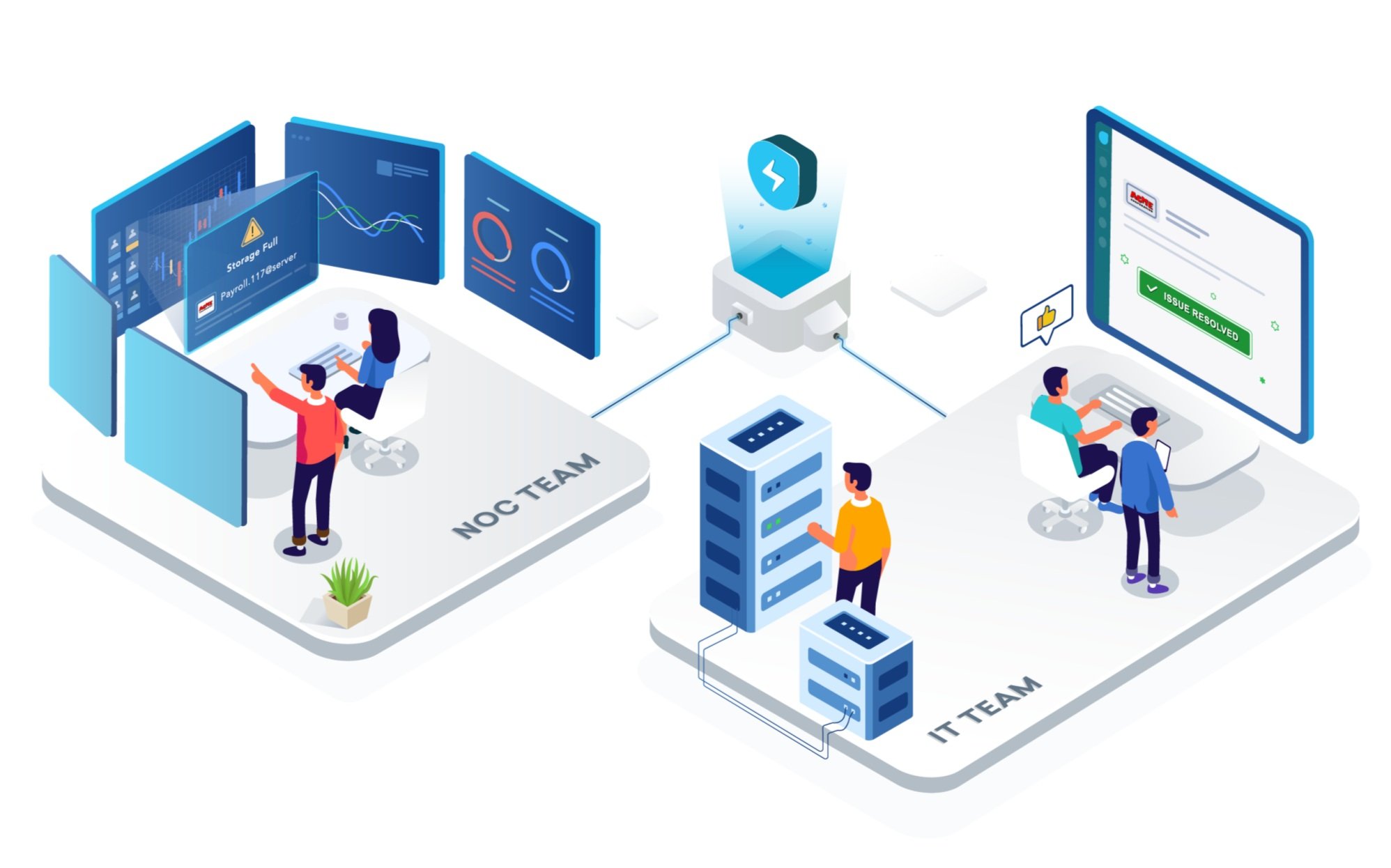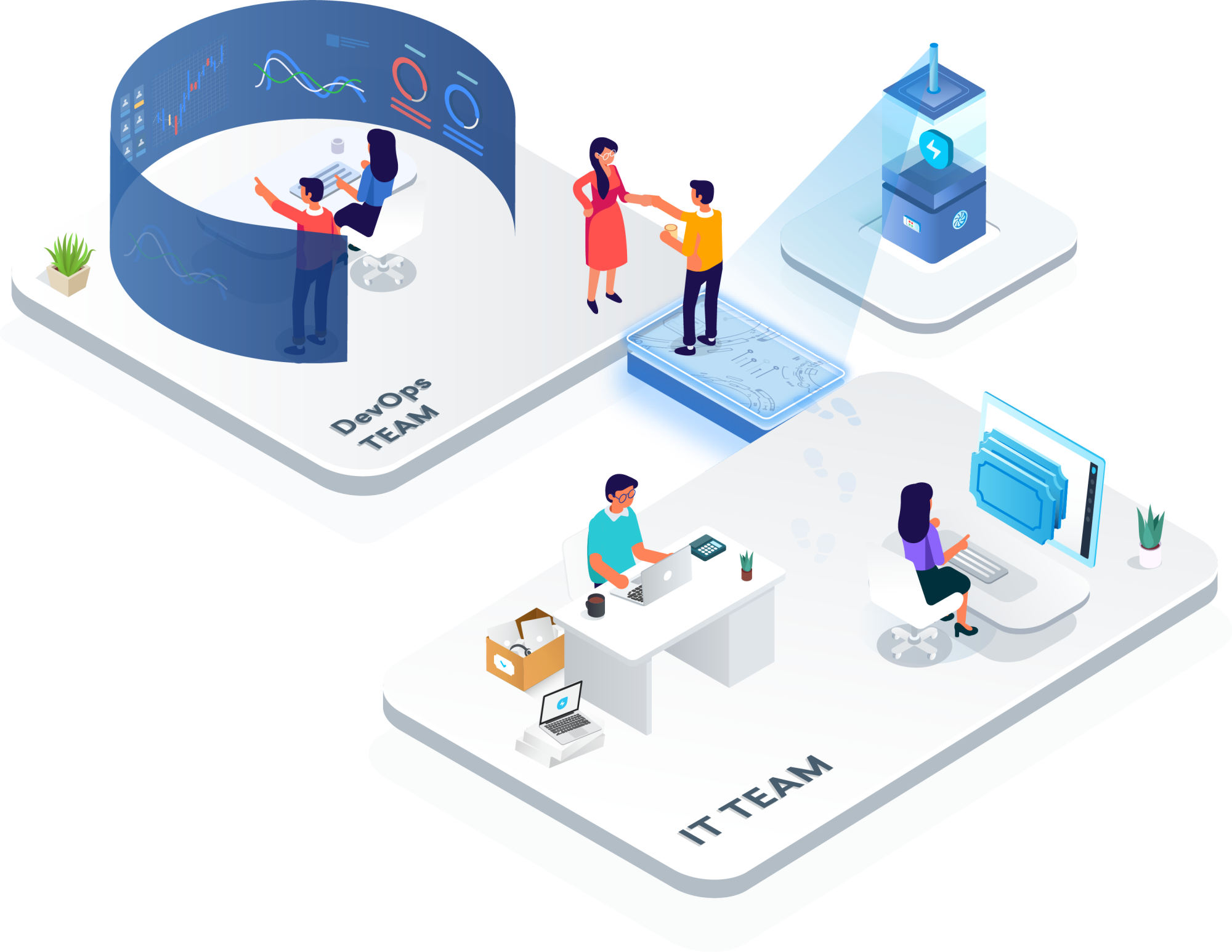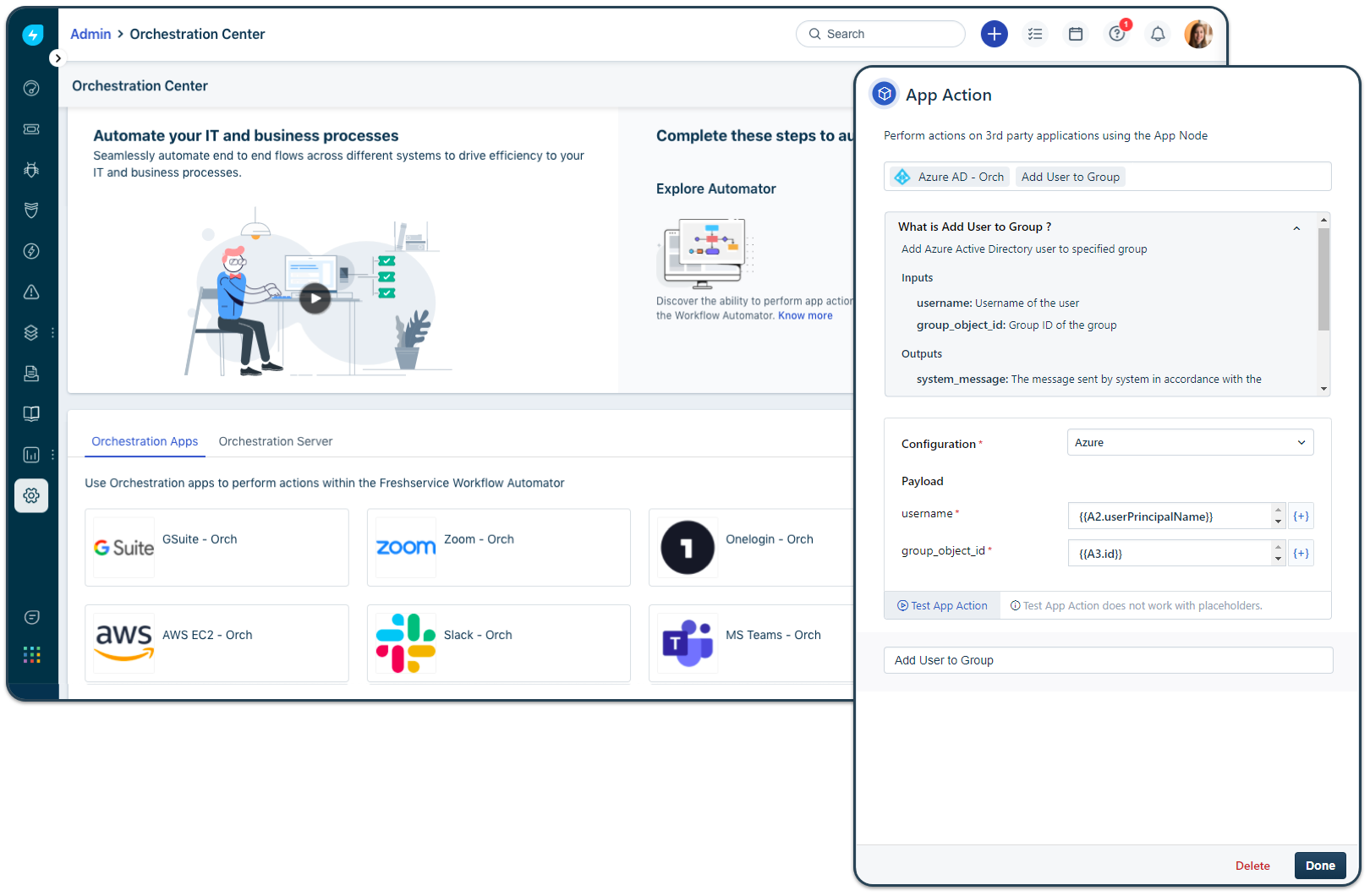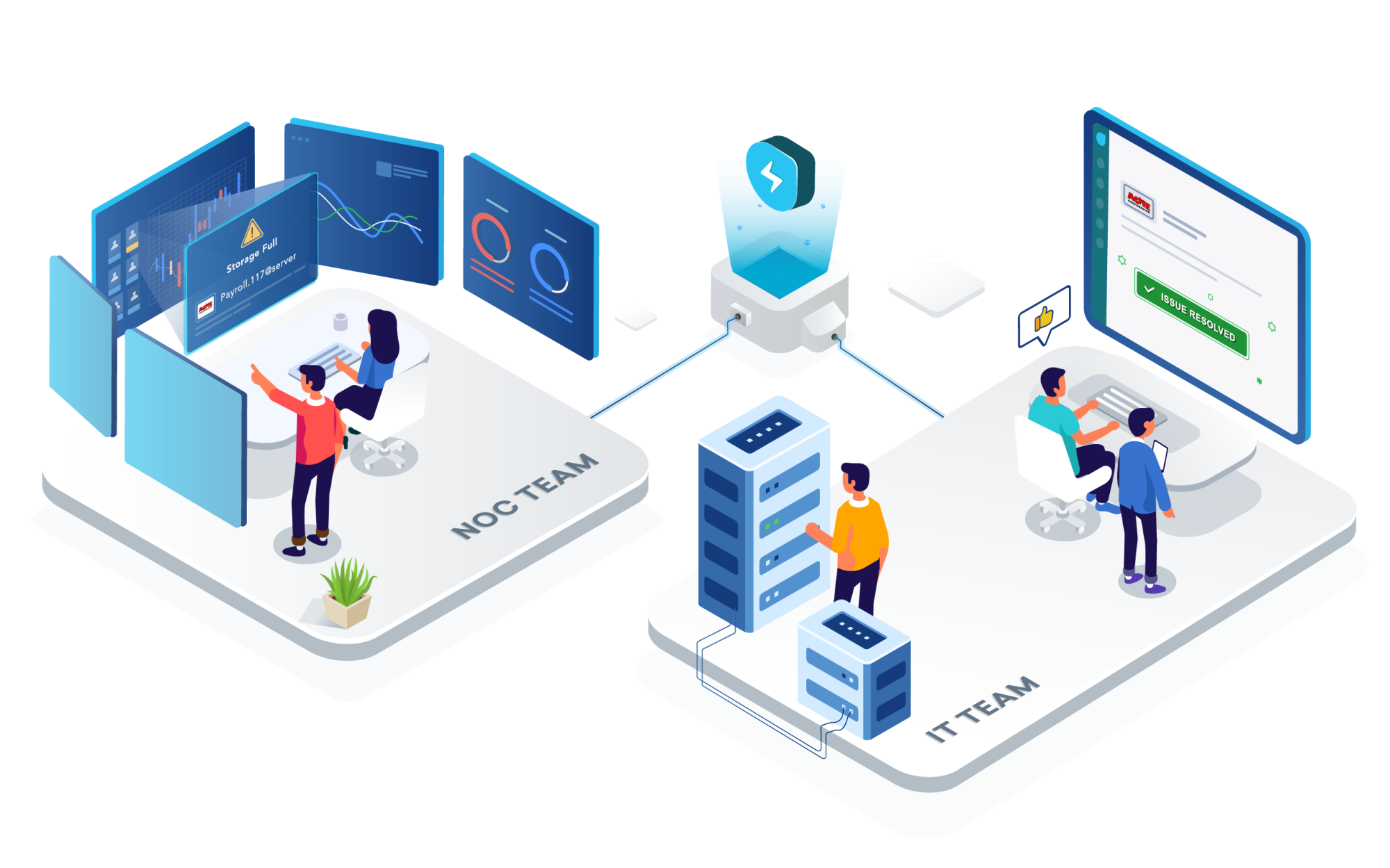
IT Operations Management (ITOM)
IT Operations Management (ITOM) is the day-to-day operational work.
IT Operations Management (ITOM) is the practices, processes and procedures for managing and ensuring cost-effective IT operations. ITOM often goes unnoticed and acts as the "invisible hand" that keeps software, hardware and services running, every day, around the clock. When incidents occur, ITOM "teams" are the first to react and ITOM practices are used to get things up and running quickly. Learning more about IT Operations Management will help you understand what happens behind the scenes and how we can help you keep your critical applications and infrastructure up and running.
ITOM is an essential component of any business. It is used to ensure that IT systems are secure, reliable and compliant. ITOM also helps to streamline processes and reduce manual work, allowing you to focus on more proactive tasks. By optimizing ITOM, you can ensure that your IT systems work efficiently, providing a solid foundation for successful IT operations.
In this text, we will define ITOM and learn more about how it works. We highlight the benefits and challenges of ITOM and provide a foundation for getting started.
ITOM describes the individual processes and services managed by an IT department - this includes administrative processes, hardware and software support, and services for internal and external customers. Effective ITOM ensures the availability, performance and efficiency of an organization's services and processes.
ITOM defines the methods that IT uses to manage services, support and deployment to ensure continuity, quality and reliability.
Common functions within ITOM
ITOM ensures that infrastructure, services, and applications are stable and available.
Networking and communications
Includes the equipment needed to provide external and internal communications for an organization - this includes configuring networks, regulating communication with external servers via firewalls, security and managing internal systems such as telephony.
Service desk and support
ITOM covers services and problems arising from servers, networks and virtual machines, among others. IT operations managers are responsible for communicating and informing about incidents, managing data backup, implementing disaster recovery plans and controlling availability.
Servers and other devices
IT Operations administers servers, virtual machines and other devices, while playing a key role in the day-to-day management of servers running critical business applications. Responsibilities may include patching, upgrading and maintenance. The ITOM is also responsible for IT assets such as desktops, tablets, mobile devices, phones and laptops.
Security, availability and performance
are key areas, especially as businesses expand and the need for technology, software and other assets increases. ITOM takes responsibility for this ever-growing range of services and solutions. Its main priority is to ensure that all these services and applications are stable, secure and available for use.
Monitoring and event management
Monitoring networks, servers, IP addresses and switch ports, managing bandwidth and network configurations, analyzing firewall rules, logs and policies, tracking application usage and monitoring storage devices is ITOM.
Monitor the state of services and infrastructure and react appropriately to the important events that emerge. Event Management provides intelligent event and alert analysis to ensure continuity in the performance of your services. Event Management receives and processes events via your ITOM/ITSM platform.
Benefits of ITOM and how to get started
Effective ITOM provides a range of benefits to the organization. This includes predicting problems, minimizing user impact, automating flows and more. Which leads to reduced costs, increased security, improved customer satisfaction, increased productivity.
Anticipate problems
ITOM systems/platforms help collect and interpret data. Data collected includes cloud data, IT infrastructure, logs, metrics and events.
Minimize user impact
ITOM makes it possible to prevent some problems before they occur, then ITOM helps you minimize the impact on end users before they ever experience a problem.
ITOM allows you to identify root causes faster and with improved accuracy, by correlating changes and incidents. You can leverage insights to collaborate across teams while triggering actions based on guided recommendations to eliminate outages, service degradation, and further empower staff.
Automate workflows across teams
ITOM provides the ability to automate workflows across teams to eliminate unnecessary manual processes and handoffs, giving your staff powerful, actionable insights that can be easily shared across teams. A learned knowledge base shortens recovery times, simplifying repetitive tasks when you have pre-built playbooks and low-code/no code workflows.
Challenges with ITOM
Data security
Teams that focus on providing devices, networks and software will eventually run into data security issues. Fortunately, your team won't be the first to do so. Most teams will break down sensitive work into a workflow that targets these vulnerabilities and secures them step by step. Documenting that workflow and using a good tool to manage it can ensure that your team takes the necessary steps to secure your most valuable assets.
Automation
Many teams look to automation to improve the efficiency and safety of their workflows. The question quickly becomes what level of effort justifies the costly work of creating an automation? Processes that are over-automated leave little room for nuance and problems that are under-automated take too much time and effort. Many strategies start with a focus on the number of tasks and automate what a colleague needs to do more than once a day.
ITOM vs. ITSM
ITOM is part of IT Service Management, or ITSM. Think of ITSM as the totality of activities that an organization performs to manage IT services. ITOM is the part that deals with the daily activities that focus on maintaining infrastructure, devices, components and applications.
Although both are IT management strategies, IT service management(ITSM) and ITOM are two different concepts.
ITSM includes activities that an organization does to manage IT services throughout the entire lifecycle, including strategic planning, service management, service desk, service improvements and changes while ITOM takes care of the day-to-day activities.
ITOM solutions
Synerity's ITOM platforms help your organization make proactive work a reality by predicting issues before they impact users or the business, preventing problems, automating workflows, and transforming how your IT teams collaborate. Synerity's ITOM solutions provide practical insights into ITOM work and allow you to leverage features to quickly feedback and deliver data from your digital services and keep your digital services running 24/7.













